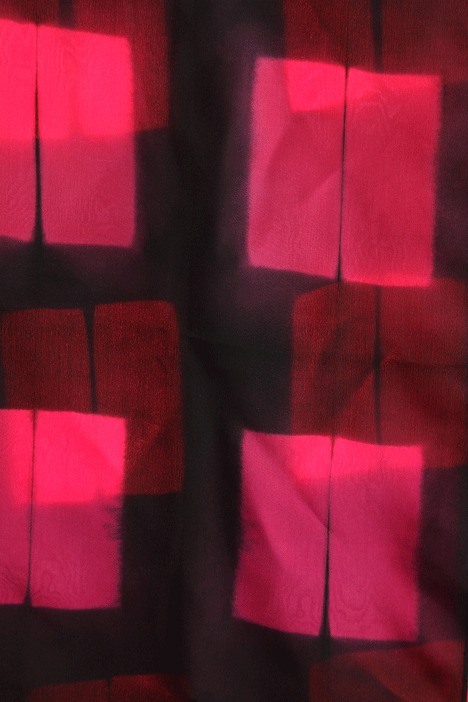They are the weavers and the shakers who represent some of the most imaginative artists on Whidbey Island.
They are the 25 members of the Whidbey Island chapter of the Surface Design Association.
“Making Our Marks” is an upcoming exhibition and sale by these textile (and other stuff) tacticians on Friday, July 9 through Sunday, July 11 at the Open Door Gallery in the Bayview Cash Store in Langley. Work by 16 surface design artists will include wall pieces, jewelry, home décor, clothing and other accessories.
The techniques used are as varied as the artists’ pieces.
One-of-a-kind felted, woven, beaded, quilted and mixed-media items are enhanced with appliqué, collage, encaustics, photo transfer, dye, paint, fusing and other surface design treatments.
Natalie Olsen is a member of the group and weaver who has been influenced by a world of techniques in the design world.
“As weavers tend to use finer threads and computer-generated looms, I find myself going back to the organic, 3-D work I did years ago,” Olsen said.
“I break the rules, weave irregular shapes, use non-traditional materials.”
Breaking the rules seems to be one of the tenets of these artists, who often think outside the box of traditional forms and let themselves run rampant with inspiration, an understandable thing to do on an island teeming with beauty, art and like-minded individuals.
The chapter began two years ago at the prompting of textile artist and member Cheryl Kamera, then the Northwest representative for the National Surface Design Association. Now the members meet every two months to talk about the process and share ideas.
“Making Our Marks” will be their third exhibition, with future ones planned for the Latimer Quilt & Textile Museum in Oregon and the Snohomish Arts Council Gallery in Everett.
It’s hard to miss the fact that every artist in the group is female, though off-island chapters enjoy plenty of male members. But, what’s interesting is that such innovative artists have come out of such traditional forms such as weaving and sewing, which historically fell to women who were often the family tailors.
Some of the women in the group talked about being influenced by mothers who taught them how to sew and a generation that grew up with home economics as part of a girl’s regular curriculum in school.
“Men used to be the master weavers, dyers and papermakers,” Olsen said.
“But women are the ones who have created basic clothing and household items since the beginning of time.”
Olsen made reference to Elizabeth Barber’s book, “Women’s Work: The first 20,000 years: Women, Cloth, and Society in Early Times,” which traces the role women have played in being the masters of textile work in the home.
Member artist Kristin Lasher began to see her own mother’s influence through the surface design and clothing pieces she found herself creating after trying any number of mediums.
“Surface Design is dominated by women because it is related to textiles as opposed to concrete, wood, etc.,” Lasher said.
“Personally, my mother was a seamstress, as well as one who saw design in her table settings, flower arrangements and her garden. Her influence did not show up right away, but eventually
I found myself liking things very different from what everyone else liked,” she added.
But Lasher pointed out that although the surface design group on Whidbey is all women, there are quite a few men on the island who are doing fine work with paper, felting and probably a lot of other surface design art. It’s just that there are a large number of women who are quilters, embroiderers and other sorts of textile artists who happen to live on Whidbey Island, she said.
Besides gender, another similarity among these artists is the absolute sponge-like quality they have for using the influences of whatever happens to cross their paths such as nature, travel, memories, classical and modern art, other mediums and the fairly new tools of computer technology that continually expand one’s abilities to stretch the boundaries of art.
Zia Gipson is an artist who grew up in a household full of occasions to cut, draw, sew or create. She said that, coupled with a lifetime of looking at art, studying art history and traveling, has landed her in a dream of a life connected to art.
“Regular felt-making was my entry into fiber arts.
I had been mostly drawing and painting before that,” Gipson said.
“That opened up my eyes to the world of other media, techniques and approaches we call surface design.”
Her travels throughout the world claim the most influence on her work, Gipson said, upsetting the apple cart of her artistic perceptions. What the world has to offer by way of changing her perception, combines with Gipson’s willingness to use all manner of media to get to the bottom of an idea.
Surface design, she said, pushes one to look at different substrates as possibilities.
“When you add textile construction — knitting, crochet, weaving, quilt-making, digital media, etc. — and change paint to dye, you have potential for tremendous variety,” she said.
Artists included in the show are Debra Calkins, Fine Gelfand, Carys Hamer, Lorraine Kirker, Nan Leaman, Nancy Luenn, Pat Morse, Marie Plakos, Diane Reardon, Teri Jo Summer, Jo Van Patten, Ellen Vlasak, Sande Wascher-James, Kamera, Gipson and Olsen.
An artists’ reception will be from 5 to 7 p.m. Friday, July 9. The hours of the show and sale are from 10 a.m. to 7 p.m. Friday, and from10 a.m. to 6 p.m. Saturday and Sunday.
For more information, click here.


